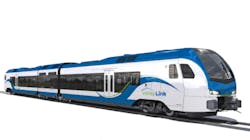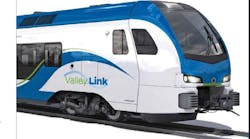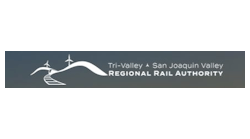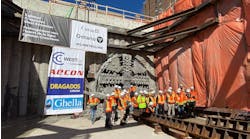The Valley Link Project, a two-phase rail project to add connectivity to the San Francisco Bay Area, would generate $3.5 billion in local business sales during the construction phase and $69 million in annual business sales, according to an analysis by PGH Wong Engineering, Inc.
The project is being planned by the Tri-Valley – San Joaquin Valley Regional Rail Authority and aims to connect the Bay Area Rapid Transit (BART) system to the Tri-Valley and the Altamont Commuter Express (ACE). PGH Wong Engineering presented its analysis to the regional rail authority board during its May 13 meeting. The analysis utilized a tool created by the American Public Transportation Association (APTA), which uses regional economic data to translate proposed transit agency activities into supported economic activities.
In addition to the local business sales generated by the project during construction and when operational, the analysis found the project would create 22,000 jobs with worker income of $1.35 billion during the construction phase. Valley Link would also support 400 jobs per year when operational with labor income of more than $19 million per year.
“I am very pleased by the results of this analysis of the economic impact of Valley Link. This project will not only get our vital workforce to their jobs once complete but will also add 22,000 jobs to boost the economy during the construction phase," said Alameda County Supervisor and Regional Rail Authority Chair Scott Haggerty.
City of Tracy Councilmember and Vice Chair of the Regional Rail Authority Veronica Vargas does not believe the value of the project can be overstated.
“As a transportation option it will provide nearly 30,000 rides a day to commuters eager to have relief from congestion on the I-580. And, in a time of economic stress with the COVID-19 pandemic, Valley Link can provide a significant job stimulus in the region,” said Vargas.
The regional rail authority was established in 2018 and in a bit more than two years, it has selected a preferred alternative for the project and published the project’s feasibility report.
The authority says trains could role on the project as early as 2027 with the opening of the first phase that would connect the existing Dublin/Pleasanton BART station across 42 miles to the proposed ACE North Lathrop Station. Valley Link trains would be coordinated to allow for convenient transfers to BART. A second phase would extend service from the North Lathrop Station to the ACE and Amtrak Stockton Station.






